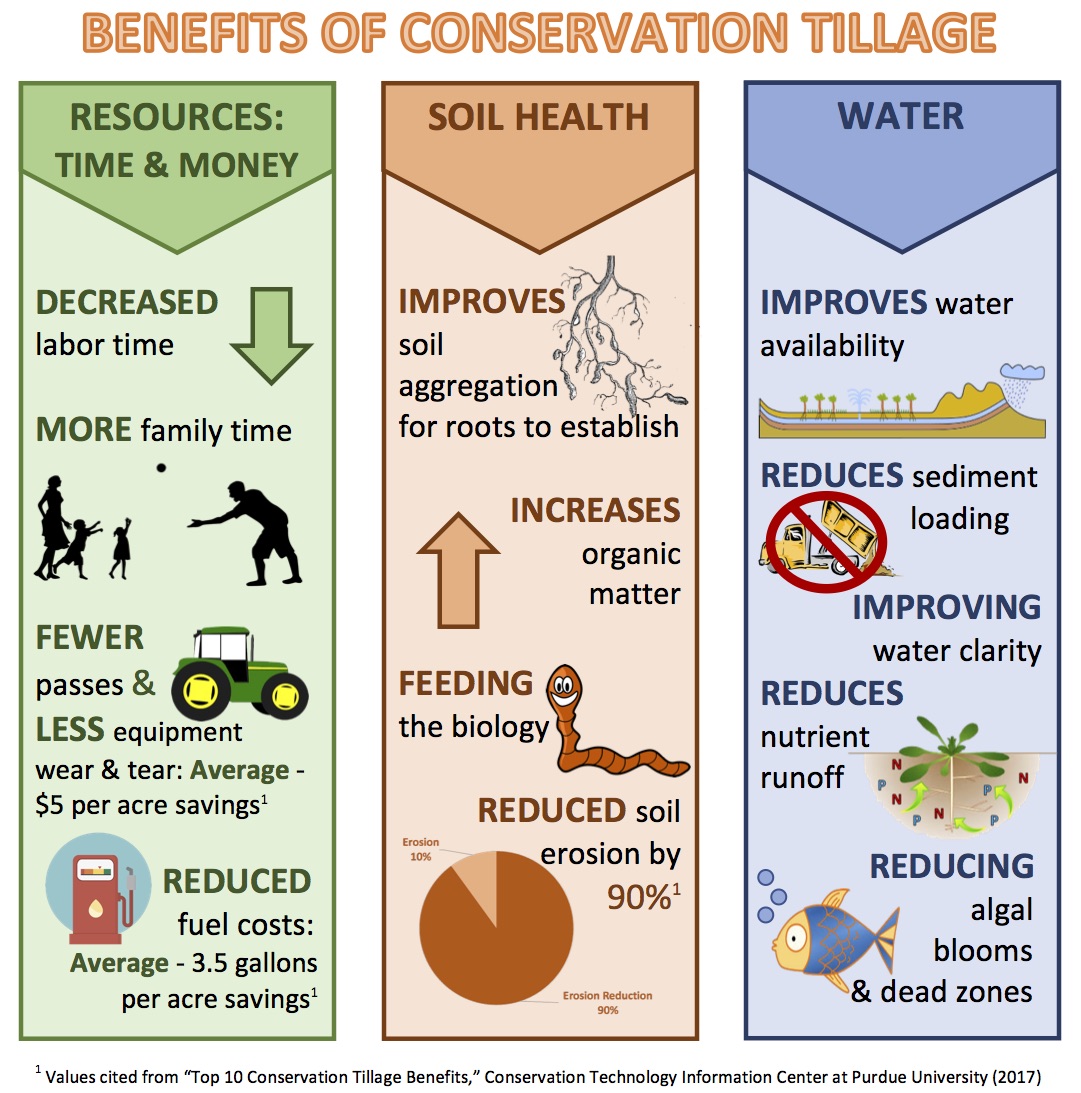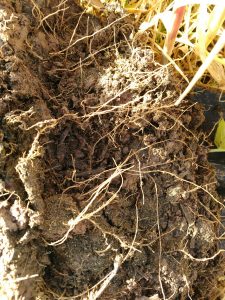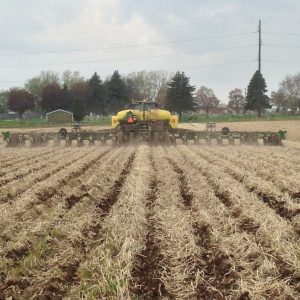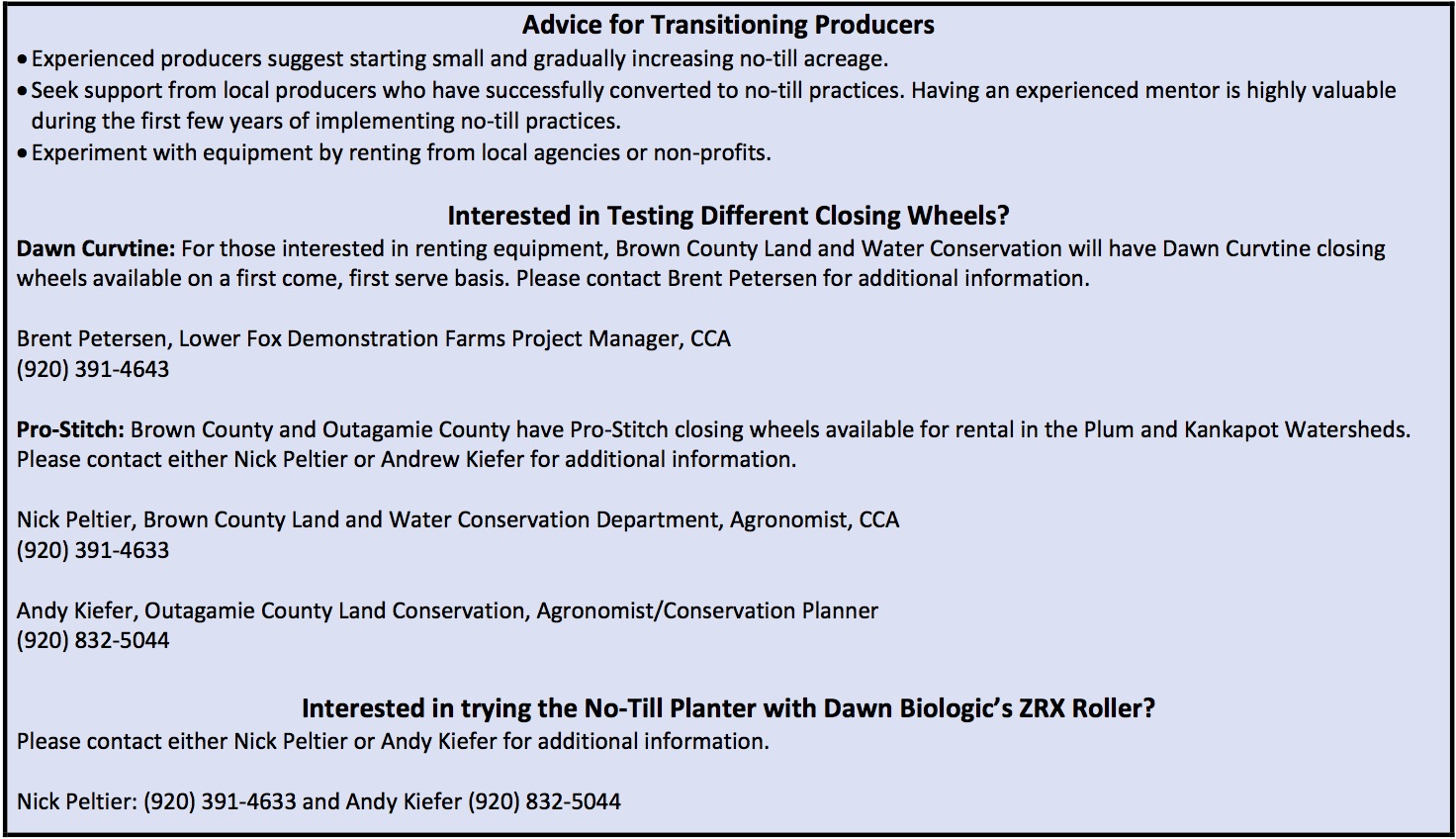With increasing fuel prices, scarcity of labor, and competitive market prices, many producers are exploring opportunities to increase their return on investment and improve their bottom-line. Implementing conservation tillage practices is one way to address rising costs (Image 1). The Fox Demo Farms Network is working to identify conservation tillage’s ability to reduce financial and labor inputs, while simultaneously improving soil health in northeast Wisconsin.
Conservation Tillage:
- Conservation tillage is any tillage practice that retains enough of the previous crop residue, such that 30 percent of the soil is covered after planting (Huggins and Reganold, 2008).

Figure 1: Graphic created by Fox Demo Farms. Illustrates the benefits of conservation tillage practices. Benefits are broken down into three categories: Resources, Soil Health, and Water.
Advantages and Disadvantages of Traditional Tillage and Conservation Tillage

Table 1: Breakdown of the advantages and disadvantages of traditional tillage and conservation tillage.

Image 2: Photo Credit: Brent Petersen. “Feeding the biology” at New Horizons Dairy, November 16, 2016
Improved soil structure is one of the most valuable outcomes of conservation tillage. When the previous year’s residue is left on the surface, rather than turned over by conventional tillage practices, it creates a mulch that protects the top-soil, while allowing natural decomposition processes “feed the biology” of the soil (Image 2). This increases the soil’s organic matter composition and improves infiltration rates.
Non-compacted soil is porous, allowing both water and air to penetrate the surface (Figure 2). This improves water absorption and reduces the likelihood of soil erosion and surface runoff, which keeps the soil and nutrients on the field where they can work for you, rather than in local waterways.

Figure 2: Graphic created by Fox Demo Farms. Conservation tillage improves soil structure by increasing organic matter, which improves infiltration rates and reduces sedimentation and nutrient runoff. Traditional tillage leaves soil vulnerable to compaction, which leads to sedimentation and increased nutrient runoff.





